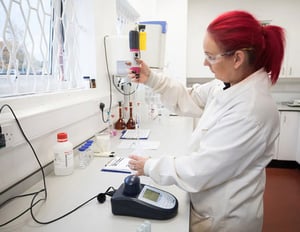TR Property Investment Trust plc (LON:TRY), announced its full year results for the year ended 31 March 2019.
| Financial Highlights and Performance | Year ended31 March2019 | Year ended 31 March2018 | %Change |
| Balance Sheet | 418.54p | 395.64p | +5.8% |
| Net asset value per share | |||
| Shareholders’ funds (£’000) | 1,328,254 | 1,255,559 | +5.8% |
| Shares in issue at the end of the year (m) | 317.4 | 317.4 | +0.0% |
| Net debt1,6 | 10.0% | 14.6% | |
| Share Price | |||
| Share price | 394.00p | 382.50p | +3.0% |
| Market capitalisation | £1,250m | £1,214m | +3.0% |
| Year ended 31 March2019 | Year ended 31 March2018 | %Change | |
| Revenue | 14.58p | 13.22p | +10.3% |
| Revenue earnings per share | |||
| Dividends2 | |||
| Interim dividend per share | 4.90p | 4.65p | +5.4% |
| Final dividend per share | 8.60p | 7.55p | +13.9% |
| Total dividend per share | 13.50p | 12.20p | +10.7% |
| Performance: Assets and Benchmark | |||
| Net Asset Value total return 3,6 | +9.1% | +15.5% | |
| Benchmark total return6 | +5.6% | +10.2% | |
| Share price total return4,6 | +6.2% | +25.5% | |
| Ongoing Charges5,6 | |||
| Including performance fee | +1.10% | +1.48% | |
| Excluding performance fee | +0.63% | +0.65% | |
| Excluding performance fee and direct property costs | +0.61% | +0.61% |
- Net debt is the total value of loan notes, loans (including notional exposure to CFDs) less cash as a proportion of net asset value.
- Dividends per share are the dividends in respect of the financial year ended 31 March 2019. An interim dividend of 4.90p was paid in January 2019. A final dividend of 8.60p (2018: 7.55p) will be paid on 30 July 2019 to shareholders on the register on 21 June 2019. The shares will be quoted ex-dividend on 20 June 2019.
- The NAV Total Return for the year is calculated by reinvesting the dividends in the assets of the Company from the relevant ex-dividend date. Dividends are deemed to be reinvested on the ex-dividend date as this is the protocol used by the Company’s benchmark and other indices.
- The Share Price Total Return is calculated by reinvesting the dividends in the shares of the Company from the relevant ex-dividend date.
- Ongoing Charges are calculated in accordance with the AIC methodology. The Ongoing Charges ratios provided in the Company’s Key Information Document are calculated in line with the PRIIPs regulation which is different to the AIC methodology.
- Considered to be an Alternative Performance Measure as defined in the full annual report and accounts.
Chairman’s Statement
Introduction
It has been a good solid year for the Trust. Even more so given the heightened volatility amidst macro-economic and political uncertainty. The Net Asset Value (NAV) total return for the year of 9.1% was well ahead of the benchmark at 5.6% and results in a 5 year annualised return of 13.6%. The share price total return of 6.2% exceeded the benchmark but was less than the NAV growth due to a slight widening in the discount between the share price and the asset value. In addition, the Trust delivered revenue growth of 10.3% and has now increased 80.2% over the past five years equating to +12.5% per annum.
The year under review fell broadly into three phases. Share prices rose steadily through the early part of the year and into the summer months. This was followed by a dramatic change in mood as equity markets across the globe sold off sharply for the remainder of 2018 on concerns from the US/China trade war escalation through to more localised geo-political issues. However, the beginning of 2019 has seen a resurgence in stock markets as central banks from the Fed to the ECB have offered dovish commentary away from further monetary tightening. Real estate has been a significant beneficiary and the Trust’s asset value has more than recovered from the fall experienced in the last quarter of 2018.
The steady growth in underlying earnings has supported returns whilst our Manager have sought to navigate the weakness of UK property equities when compared with their Continental European counterparts. The other striking feature has been the continued divergence of performance between asset types with retail property the clear underperformer contrasting with demand for logistics assets from occupiers and investors, which remains unabated.
A consequence of the deferral of interest rate rises, courtesy of the central banks, has been a renewed focus on longer term income streams and in particular those which benefit from indexation. This theme, which I referred to last year, has contributed to strong performance from property with these characteristics including healthcare and student accommodation through to residential Private Rented Sector (PRS) and supermarkets.
The value of our physical property portfolio, which represents less than 10% of the assets, also reflected the demand for long income as our largest asset, The Colonnades in Bayswater, was subject to an increase in value led by the index-linked, long leased income from our largest tenant, Waitrose.
Revenue Results and Dividend
The revenue increase of 10.3% has been driven by healthy growth in the underlying dividends from our investments, more details are given in the Manager’s Report. The board is delighted to announce a similar increase in the level of the full year dividend and is recommending a final dividend of 8.60p per share bringing the full year dividend to 13.50p.
Revenue Outlook
The early part of the current financial year is producing consistent earnings which suggest modest growth for the year ahead.
Of course, the usual caveats apply and include earnings being affected by a change in the timing of dividends received around our year end and corporate activity. As we have experienced in the past, a major variable is foreign exchange rates as just over half our income is non-Sterling denominated. This can have a significant impact on earnings for the year.
Debt
Net debt has been reduced from 14.6%, as reported at the previous year end, to 10.0%. These figures include the impact of CFD exposure. This reduction in gearing was primarily due to listed companies being taken private at significant premiums, however, gearing has been maintained at this level since the year end in view of the prevailing political uncertainty. All our revolving loan facilities have been renewed so that further finance is available if and when an increase in gearing levels is considered by the Manager to be beneficial.
Currencies
Currencies were less volatile over this financial year than during the previous two years. Sterling ended the year marginally stronger than at the beginning. However, over the year it fluctuated through a 7% range.
Our balance sheet currency exposure remains hedged in line with the benchmark, however the income account is un-hedged, therefore strengthening of Sterling will have an adverse effect on our income.
Discount and Share Repurchases
The discount widened slightly during the year from 3.2% to 5.3% at the year end. This range remains well within the 10 year average of 7.1%.
No shares were repurchased during the year.
*share price discount to capital only NAV
Board Changes
Suzie Procter retired from the Board in February 2019 and I would like to record the Board’s thanks for her contribution over the last six years. An experienced recruitment consultant specialising in non-executive directors is actively seeking another high calibre director to join the Board.
Outlook
In November, I concluded that whilst the ECB had signalled its intention to resume a more normalised interest rate cycle, this could well be deferred if economic growth dampened. We now find ourselves in that state of affairs with global trade tensions and attention on Germany, the European powerhouse, which is focused on exports and hence global growth. Recent economic news has been weaker than anticipated and this has encouraged the ECB to remain dovish towards the timing of the next interest rate increase. Market expectations for interest rate rises have therefore moved out to 2020 and possibly beyond, the longer end of the interest curve also remains very subdued. For our companies the ability to fix longer term debt at record low levels remains highly attractive and helps the predictability of companies’ earnings.
In an environment where investors are seeking income, property benefits from the characteristic of offering relatively high income returns, often growing with inflation. Our Manager continue to focus on real estate businesses in areas and sectors which offer the likelihood of rental growth. The divergence in performance between companies with those attributes and the remainder has widened to record levels. This does create the risk of the most popular names becoming overbought and the least popular are at risk of being oversold. Our Manager remain vigilant, keeping a very close eye on earnings – the bedrock of this asset class.
Our confidence in the stability of earnings and the relative attractiveness of the asset class versus other risk assets offers little succour in the event of broader market weakness. The impact on the UK, and to a lesser extent Continental Europe, inflicted by unprecedented levels of political uncertainty may well only become apparent in years to come. What we do know, at the time of writing, is that we remain in a period of great political uncertainty and I take the opportunity to remind shareholders of the broad pan European spread of our assets.
Hugh Seaborn
TR Property Chairman








































